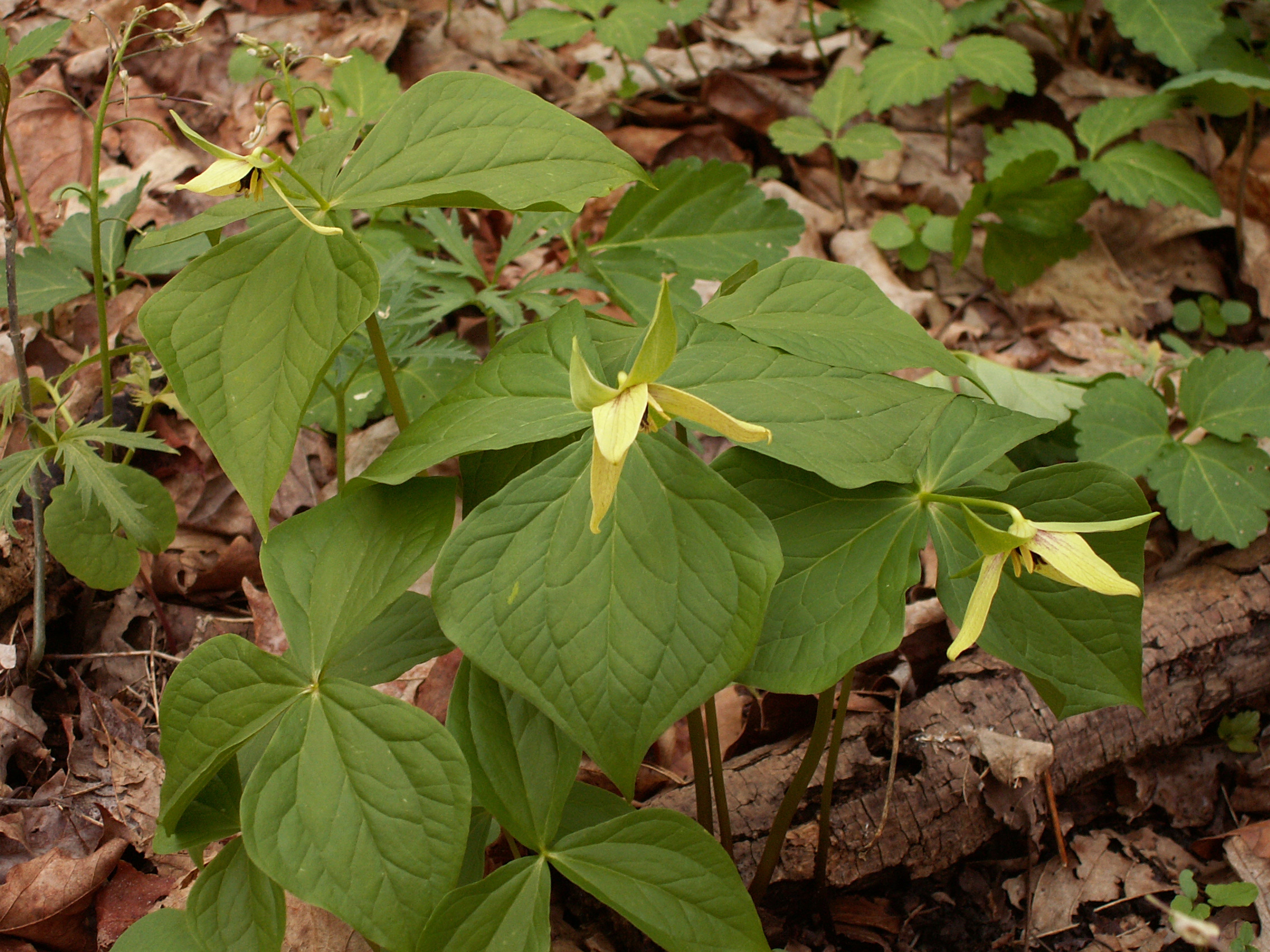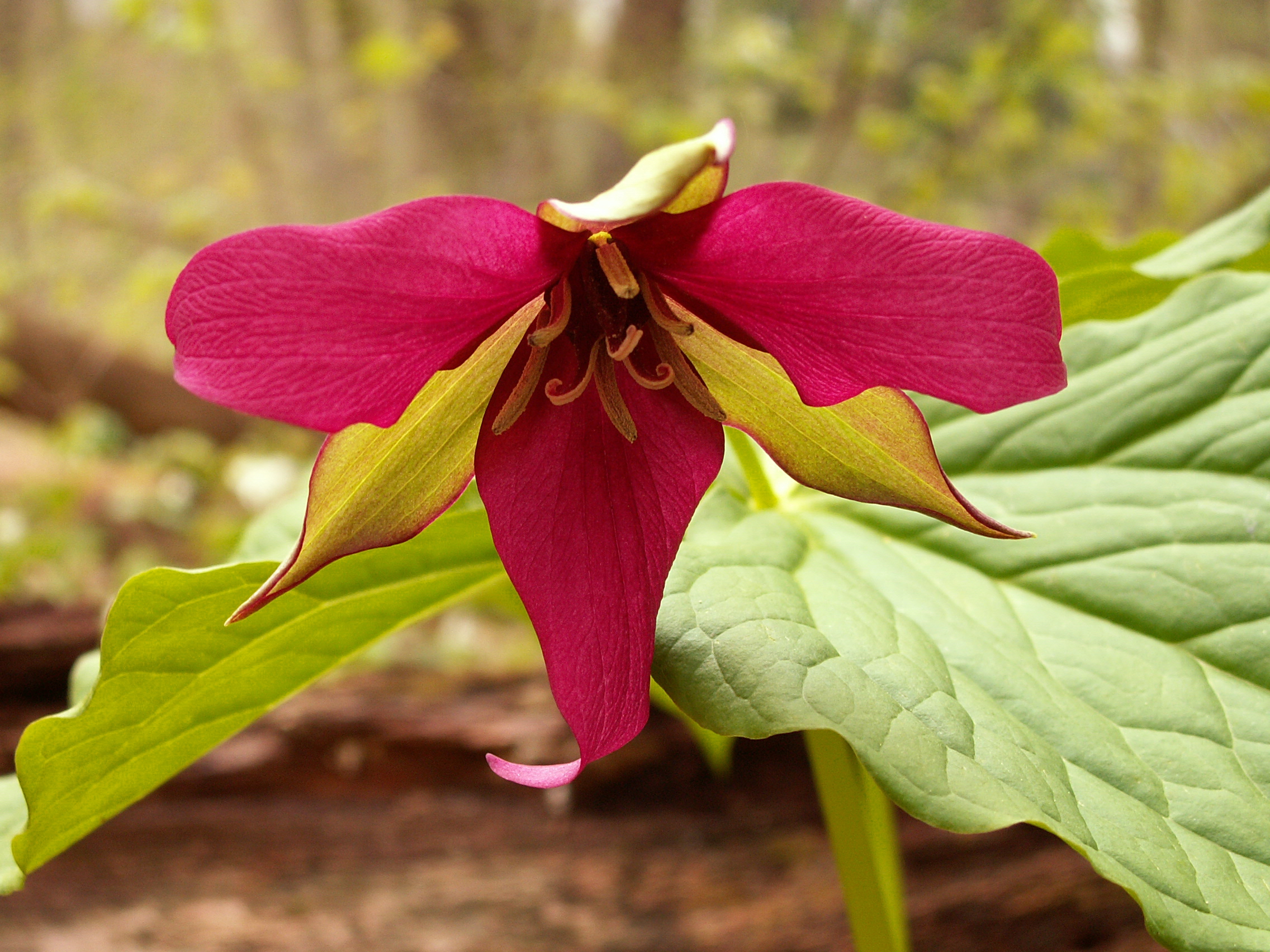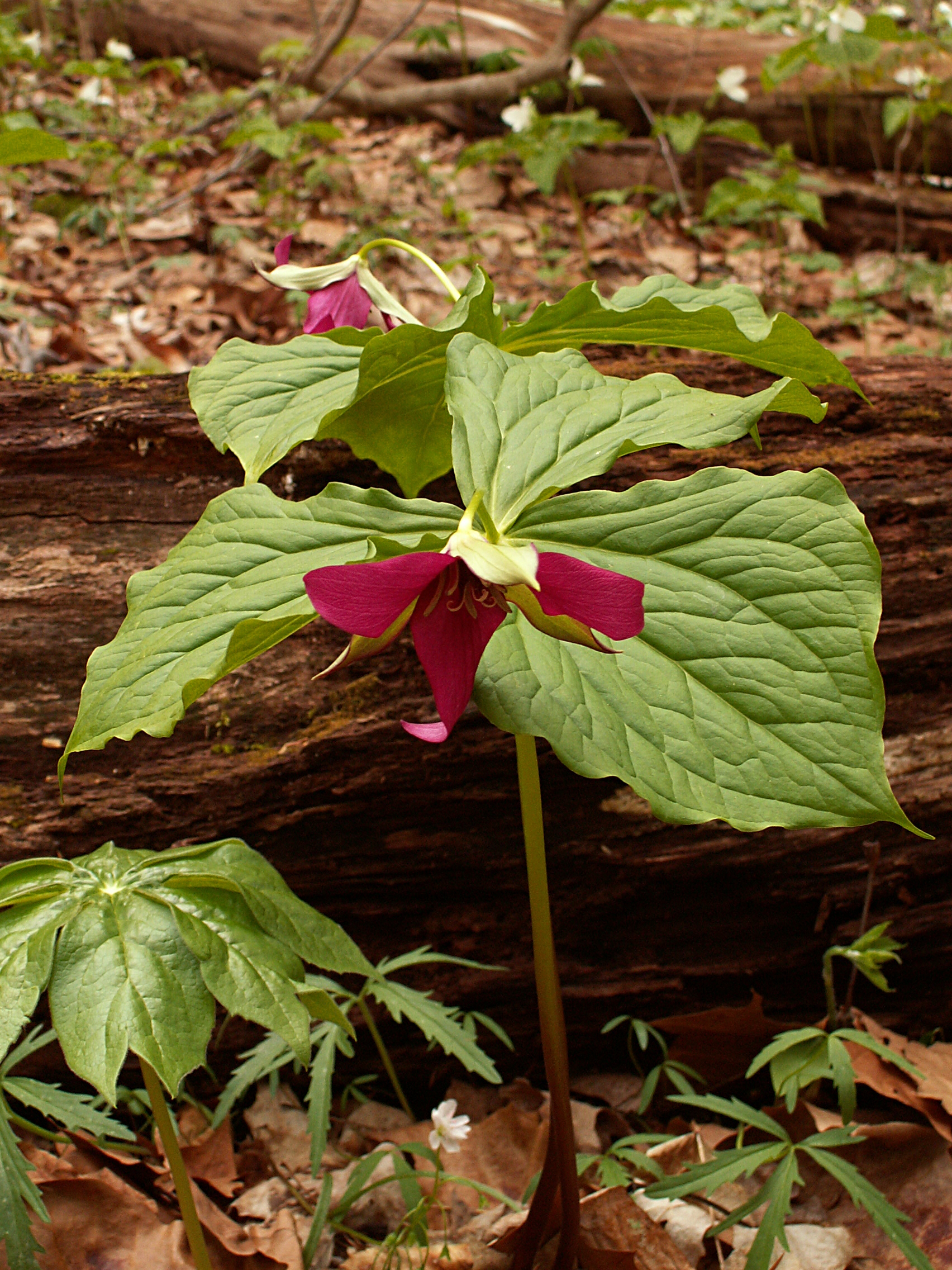This rare greenish-yellow form of the Wake-Robin grew above the Squaw Run in Fox Chapel, where it was blooming at the beginning of May. Wake-Robins are most commonly red, but in Fox Chapel they are almost exclusively white (see pictures here and here); among countless thousands, this was the only yellow clump we found. The odor is described in the Flora of North America as “like a wet dog,” which is unmistakable, and accounts for another common name, Stinking Willie. It’s not a flower to sniff with delight.
Gray describes the genus and the species:
TRÍLLIUM L. WAKE ROBIN. BIRTHROOT. Sepals 3, lanceolate, spreading, herbaceous, persistent. Petals 3, larger, withering in age. Stamens б; anthers linear, on short filaments, adnate. Styles awl-shaped or slender, spreading or recurved above, persistent, stigmatic down the inner side. Seeds ovate, horizontal, several in each cell. — Low perennial herbs, with a stout and simple stem rising from a short and praemorse tuber-like rootstock, bearing at the summit a whorl of 3 ample, commonly broadly ovate, more or less ribbed but netted-veined leaves, and a terminal large flower; in spring. (Name from tree, three; all the parts being in threes.) — Monstrosities are not rare with the calyx and sometimes petals changed to leaves, or the parts of the flower increased in number.
Ovary and fruit 6-angled and more or less winged.
Flower pediceled; connective narrow, not produced; leaves subsessile.
Anthers at anthesis exceeding the stigmas.
T. eréctum L. Leaves very broadly rhombic, shortly acuminate ; peduncle (2—8 cm. long) usually more or less inclined or declínate; petals ovate to lanceolate (18-36 mm. long), brown-purple or often white or greenish or pinkish; stamens exceeding the stout distinct spreading or recurved stigmas; ovary purple; fruit ovoid, 2.5 cm. long, reddish. — Rich woods, e. Que. to Ont., southw. to Pa. and in the mts, to N. C. — Flowers ill-scented.






